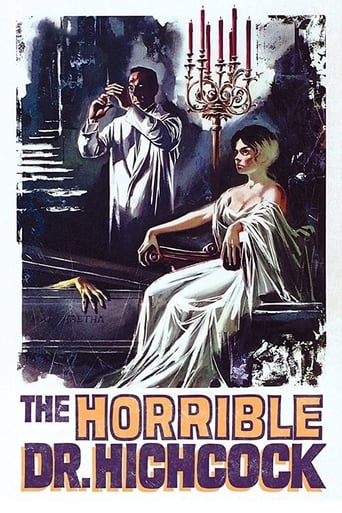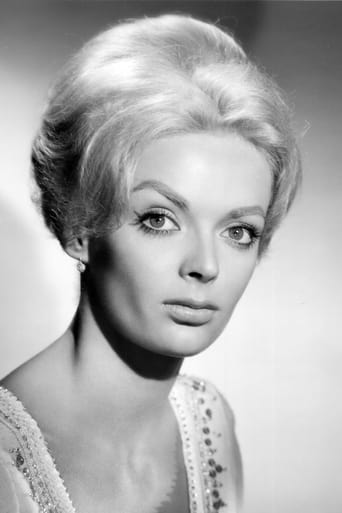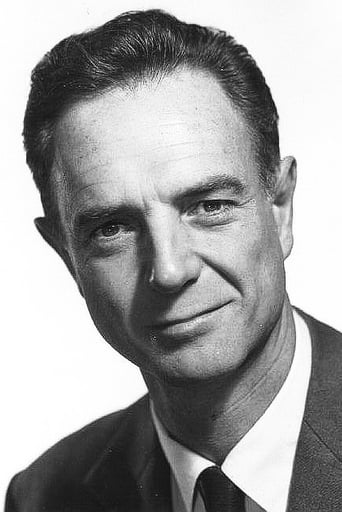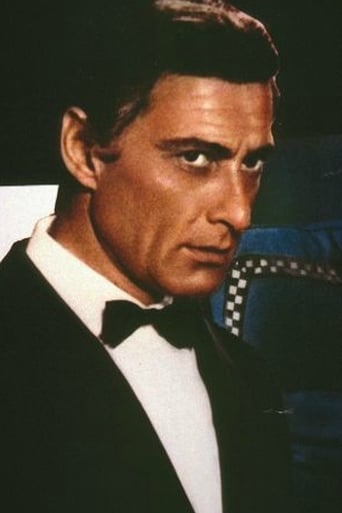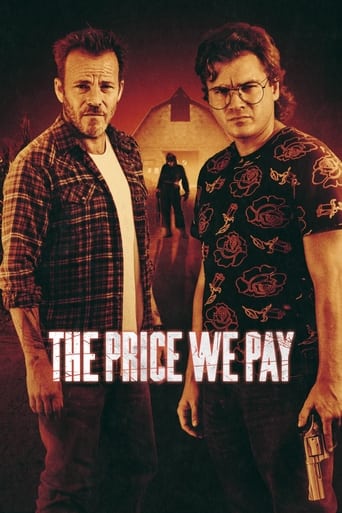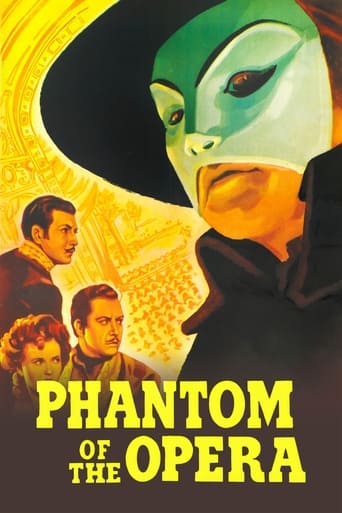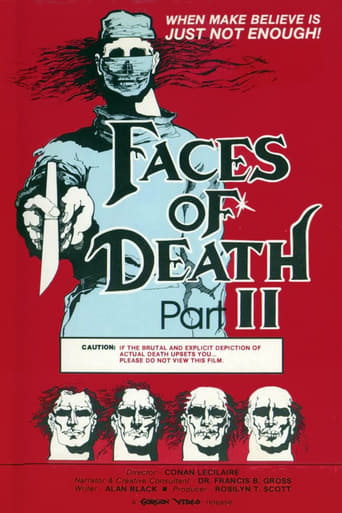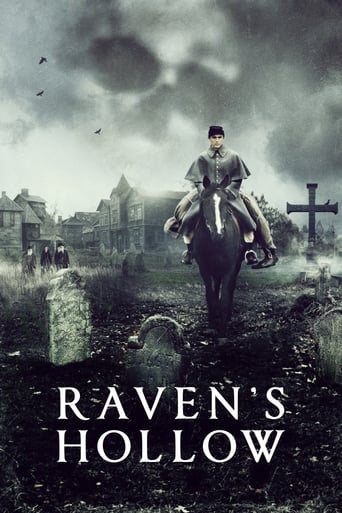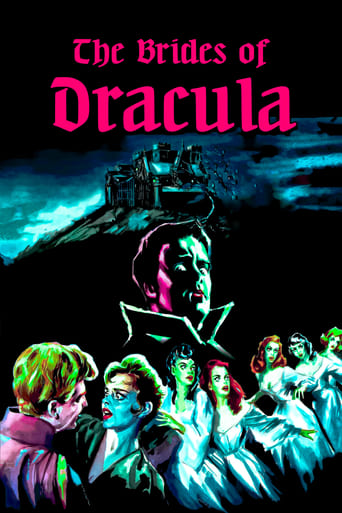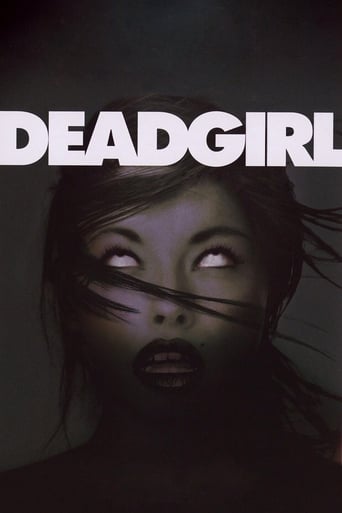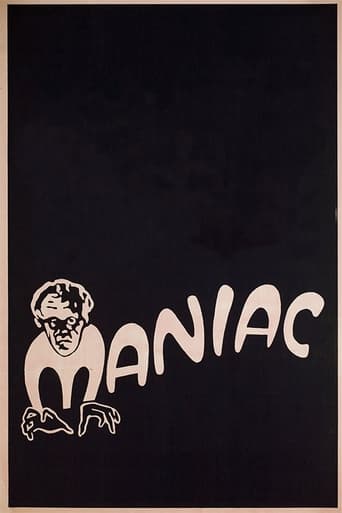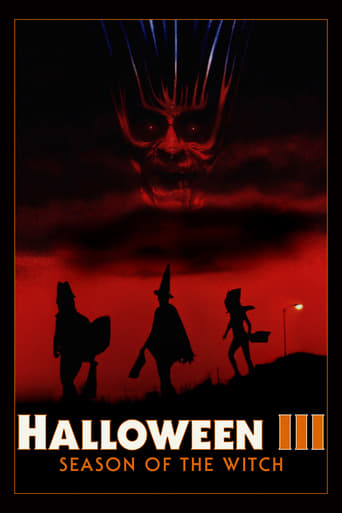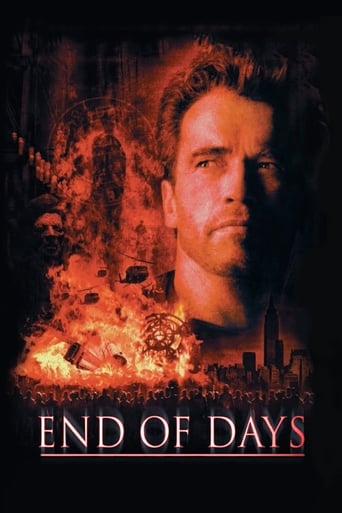The Horrible Dr. Hichcock (1962)
The year is 1885, and necrophiliac Dr. Hitchcock likes to drug his wife for sexual funeral games. One day he accidentally administers an overdose and kills her. Several years later he remarries, with the intention of using the blood of his new bride to bring his first wife's rotting corpse back to life.
Watch Trailer
Cast


Similar titles
Reviews
Very very predictable, including the post credit scene !!!
This is a must-see and one of the best documentaries - and films - of this year.
what a terribly boring film. I'm sorry but this is absolutely not deserving of best picture and will be forgotten quickly. Entertaining and engaging cinema? No. Nothing performances with flat faces and mistaking silence for subtlety.
This movie feels like it was made purely to piss off people who want good shows
I suppose how horrible you think Doctor Hitchcock is depends on your own view of necrophilia. I mean, sure, the first time we see him he's bashed the head of a gravedigger so he can have a quick go on a corpse's paps, but then he did show his kinder side by also being the Doctor who stitched up the poor guy's head at the hospital later. And it's not necrophilia is his wife is still alive, and only looks dead because of the drugs he pumps her full of, is it? It's a complicated issue.This film also gives us a Double Scouse Lead Actor Line-up! (or D.S.L.A.L for short)! Not only do we have Birkenhead born Barbara Steele in the film, but playing Doctor Hitchcock is Liverpool born actor Roberyt Flemyng! Very little is known of this actor, except that he was an aristocratic-looking character actor, with a 60-year long theatrical career stretching back to 1931. The son of a Liverpool physician, he had a brief medical career, which he abandoned in preference to becoming a thespian. Rose to prominence as Keit Neilan in 'French Without Tears' in 1936. Thereafter, had leading roles on the London and Liverpool stages. Also appeared on Broadway and went on tour in 1952 opposite Katherine Cornell in 'The Constant Wife'. During World War II, he served with the Royal Army Medical Corps, reaching the rank of full colonel. He was awarded the MC (Military Cross) in 1941, mentioned in dispatches and was awarded the military OBE (Officer of the Order of the British Empire) in the 1944 King's Honours List for his services to the Royal Army. On 21st March, 1995, he suffered a serious stroke and was for a time comatose. He eventually recovered consciousness, but was incapable of speech and was limited in his movements. He died as a patient in St. Thomas's Hospital in London in the early hours of May 22nd, but that's all I can think of off the top of my head.Barbara by the way is Dr Hitchcock's second wife, because Hitchcock accidentally killed his first wife with those drugs while trying to turn her into a fake-corpse. Hitchcock, after twelve years, has now returned to his creepy old mansion with Barabararararara, who immediately takes a dislike to meddlesome ratbag housemaid Harriet White. After some screaming is heard, an alarmed Barararararbara is told that's just Harriet's crazy sister and that she's getting shipped off to some loony bin the next day. If that's the case, however, who's running around laughing, being spooky, and making use of the mansion's standard-issue secret passageways? And why is that creepy cat still alive after twelve years?Barbara Steele sure does a lot of fainting in this film! Someone leaves a skull in her bed = faint. She's out in the garden when a ghostly bridesmaid runs about = faint. She looks through a keyhole and sees someone preparing a noose = keels over. That last one doesn't work out too well for her either. Someone's up to something, and while all that's happening Dr Hitchcock is getting a hankering for some cold flesh, and constantly nearly keeps getting caught at the hospital morgue for this troubles (mainly by suspicious Silvano Tranquili, who has the hots for Barbara).I'm going to level with you here and say that this film isn't exactly a white knuckle ride. It's pure undiluted Gothic horror that takes it's sweet time getting to conclusion, but just like his other film The Ghost, Riccardo Freda makes good use of colour and throws in loads of mood (and thunderstorms, don't forget thunderstorms). There's one particularly weird scene where Barbara hallucinates Hitchcock's face swelling up while red light fills the screen. That said, I do prefer the Ghost if I had to compare the two.
A master surgeon, one of—if not the best—in the world, has a depraved secret. Riccardo Freda's THE HORRIBLE DR. HICHCOCK is a Gothic horror delight set in London. A beautiful pianist, Margaretha, who is ill, Hichcock's beloved, dies after his anesthetic, used on patients, accidentally kills her.Hichcock must leave his manor because Margaretha's memory torments him, resigning from the hospital and in doing so the doctor meets a new love, Cynthia (horror iconess, Barbara Steele), returning to home and job shortly afterward. As a popular surgeon and doctor, with a distinguished reputation of success, Hichcock is always in demand and so his career often keeps him away from Cynthia who is uncomfortable in the manor. Hichcock, though, after losing Margaretha, will not use the anethstesia any longer as a physician, and this decision increases the mortality rate of the patients under his care, earning disappointment and criticism from those who work alongside him. Meanwhile, Margaretha's memory, all her portraits enshrined throughout the manor, walls and walls adoring her beauty, becomes a burden to Cynthia who just wants to have one room that doesn't remind her of love lost. Through Bernard, we learn that Cynthia was in a hospital due to a terrible mental shock as a result of her father's death, establishing a potential psychological problem which might be contributing to several eerie instances where she hears voices forewarning her of death to come, not to mention, footsteps, a turning doorknob, and a skull found on her bed. Hichcock does have a suspicious maidservant, Martha, who shows her disapproval when Bernard is in her presence, and doesn't hide her disgust for Cynthia or the sheer fact that he has "replaced" Margaretha with another. A locked room Martha is protective of intrigues Cynthia—what is in this room? Another subplot concerns Bernard's assistant, Curd, who falls in love with Cynthia, his feelings quite evident when they are alone together; it creates the obvious awkwardness because both know these feelings exist. As time goes by, Hichcock becomes more and more distant and cold, which certainly affects his marital relations with Cynthia.Truthfully THE HORRIBLE SECRET OF DR. HICHCOCK is as much a dark, Gothic soap opera as it is a horror movie with all the elements in place, in particular, the result of Bernard's infatuation with the corpse of a lovely woman at his hospital and how his alienation for Cynthia slowly drives a wedge between their marriage (and, it is certain to drive her into the arms of Curd who would offer her more of a fruitful relationship).What is interesting (or at least what *I* found interesting) is that not only does Hichcock have a secret, but Martha is hiding something as well. The room with the mirror, Hichcock's old laboratory, holds that secret Martha has been intent on keeping to herself, and soon Bernard—as does Cynthia through investigation (or, as one might call plain, old snooping)—will experience himself what she has been hiding. I think this is when the movie hits its stride, near the hour mark, with what I consider the film's greatest set piece, during a loud thunderstorm, the lightning bright and powerful, where Bernard hears a familiar tune from the piano in his manor, someone in a white dress, face covered by a veil, which initiates his long dormant perversion to flower, poor Cynthia the victim of his deviant uprising. He will use his anesthesia to paralyze Cynthia, so that she resembles a corpse, unable to move, in order to satiate his deep rooted psycho-sexual deviance. I loved how the movie unravels, the knowledge that Cynthia is in danger because we are allowed to have moments with Hichcock and see the undercurrent of depravity lurking underneath, only a matter of time before his Hyde surfaces. The sinister atmosphere director Ricardo Freda builds is methodical, a slow-burn approach known during this period in Gothic horror when pacing isn't a factor European filmmakers were concerned with.What I love about Barbara Steele is that she can slide into the heroine and villainess roles, ably talented to convince in performance as a victim-to-be, vengeful ghoul, or manipulative menace. Her period in Italy and Europe yielded good and bad, but when you have both PIT & THE PENDULUM and BLACK Sunday on your resume, I'd say that constitutes a solid career, even if it lasted a period of ten years. There is a great scene right out of Von Dreyer's VAMPYR where Cynthia awakens to find herself trapped in a coffin with her inscription written on the outside.. Freda's camera steadily drawing near the casket where a small window (some coffins were made to show the deceased's face prior to burial) to unveil Steele's face, her eyes opening, all that horror being buried alive present, Cynthia's fate grim. Following this is an intense conclusion where Cynthia attempts to escape from what could be Margaretha's specter—Hichcock's home has underground tunnels, prisons, and a crypt, identifiable to Gothic horror films featuring castles, there always seems to be secret passageways and architectural labyrinths to discover by unfamiliars who walk unknowingly into them. The ending is closer to Corman than Bava, however, the burning castle and handsome hero coming to save the damsel in distress. Robert Flemyng I thought was excellent, the way his hands caress the bodies of those he craves to ravage (mostly bodies of the dead!), and how he shows the teeming unrest and disquiet that lies beneath; I think he's a tortured soul who cannot help himself. Silvano Tranquilli has the uninteresting part of bland love interest for Steele..these are the parts that are written without the vitality normally dedicated to the more colorful villain as evident in Corman's Poe films with Vincent Price.
L' Orribile Segreto del Dr. Hichcock, or The Terror of Dr. Hichcock, The Horrible Dr. Hichcock or The Secret of Dr. Hichcock as it's also known amongst English speaking audiences, starts in 'London, 1885' where Professor Bernard Hichcock (Robert Flemyng) likes to have sex with his wife Margaret (Maria Teresa Vianello) while she is drugged to appear dead because he's a necrophiliac. However when his wife does die in reality Professor Hichcock decides to leave London, jump forward 12 years later & Professor Hichcock returns to London with his new wife Cynthia (Barbara Steele). Unfortunately things take a downward spiral for Cynthia as she becomes convinced the house is haunted by Maragret's ghost & matters aren't much better for professor Hichcock as every time he's about to do the dirty with a corpse in the hospital morgue someone walks in on him...This Italian production was directed by Riccardo Freda & didn't really do anything for me at all, I should also point out that I think I saw the 85 odd minute uncut version as opposed to the heavily edited by 12 minutes version that was released in the US although I don't know whether it has subsequently been re-released uncut. The script by Ernesto Gastaldi is the culprit here, it's a mess that doesn't explain anything & is frankly extremely dull with an extremely thin plot which takes a backseat anyway. It's never made clear why Hichcock wants to drive Cynthia mad, I mean if your trying to kill someone just do it! It's never explained whether it was the ghost of Margaret or if she was still alive & why they needed to kill Cynthia either. The character of Martha (Harriet Medin) the housekeeper was never explained to any degree either & she simply 'leaves' just before the end for no apparent reason. What I'm trying to get across here is that every major plot point that could have turned L' Orribile Segreto del Dr. Hichcock into a classic Gothic horror mystery have holes in them you could drive a tank through, nothing is explained to any satisfaction & once 'The End' credit comes up your not entirely sure what the preceding 90 odd minutes were all about, or 75 if you've got the cut US version & I can only begin to imagine what a mess that cut is. One more thing which annoyed me, even though the films title refers to him as Dr. Hichcock he is never referred to that way in the film itself & is always called Professor Hichcock. It's slow going as well, 90% of the films run time takes place on the same set of stairs & I don't really get all the positive reviews for this lame & rather dull film.Director Freda does a great job here, sure I didn't like the mess of a story but L' Orribile Segreto del Dr. Hichcock sure does look good. It has some terrific 19th century production design, the sets, costumes & props all go to create a visually great film with plenty of stylish lighting as well. It's just a shame the story is so thin & weak. Forget about any gore as there isn't a single drop of blood in the entire film & Dr. Hichcock's necropilious activities amount to nothing more than a kiss, by todays standards this is PG rated stuff all the way.Technically the film is very good with decent production values although there are only a few locations they are used to good effect. It's always hard to judge the acting when watching a dubbed film & a badly dubbed film at that.L' Orribile Segreto del Dr. Hichcock is a pretty poor film, sure it has a great visual style about it but is that enough? I'd say no as I'd take a good strong story over flashy visuals any-day of the week, it's just my opinion of course but I think this is a pretty poor film.
This minor but interesting entry in the Italian Gothic/horror genre is a first in that no film had ever dealt before with the subject of necrophilia. Set in London in 1885, Robert Flemyng portrays Dr. Bernard Hichcock who kills off his first wife, digs her up for a little body worship, then marries the ever-ravishing Barbara Steele. Harriet White Medin is perfect as the spooky housekeeper with an ample supply of nasty secrets and protectress of the demented doctor. Flemyng, Steele & White Medin are quite a terror-ific trio and this flick is lots of fun. Beware of the truncated, rather mutilated American version known as THE HORRIBLE DR. HICHCOCK. The dictatorial director Riccardo Freda was responsible for making this film on a bet in just a few days but it doesn't show. HICHCOCK benefits from superb Technicolor and some nice locales and art direction. Even the castle mascot is a black cat named Jess-Belle. Required viewing for all fans of Barbara Steele as it is among her best Italian work. Freda was only equal or better with his work on I VAMPIRI and CALTIKI, IL MOSTRO IMMORTALE.

